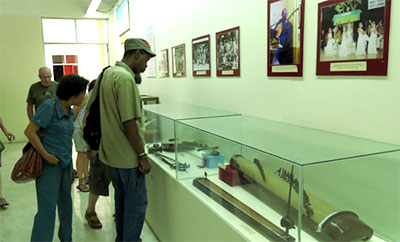Over 200 images, artefacts, books and newspaper stories on the formation and development of “Don ca tai tu”, Viet Nam’s latest piece of world intangible cultural heritage, are being offered to the public at the Museum of the Mekong Delta city of Can Tho.

The eight-day exhibition, opened on April 8, aims to honour artists, composers and researchers who have created, preserved and brought into play values of the typical musical art of southern Viet Nam.
Recognised as an intangible cultural heritage in December 2013 by UNESCO, Don ca tai tu is said to have both scholarly and folk roots and developed in the south of Vietnam in the late 19th century.
It is performed at numerous events, such as festivals, ‘death anniversary' rituals, and celebratory social events. The audience can join in by practicing, making comments or creating new lyrics for songs.
It has been transmitted from generation to generation through official and unofficial forms of education in all 21 southern provinces.
The art form is played on a variety of different instruments, including the kim (moon-shaped lute), co (two-stringed fiddle), tranh (16-string zither), ty ba (pear-shaped lute), song lang (percussion), bau (monochord) and sao (bamboo flute), and the violin and guitar, which were adapted to fit the style.
Influenced by other forms of cultural heritage from the central and southern regions of Viet Nam, such as nhac le (ceremonial music) and hat boi (classical theatre and folk song), the music genre was added to the National List of Intangible Cultural Heritage in 2012.